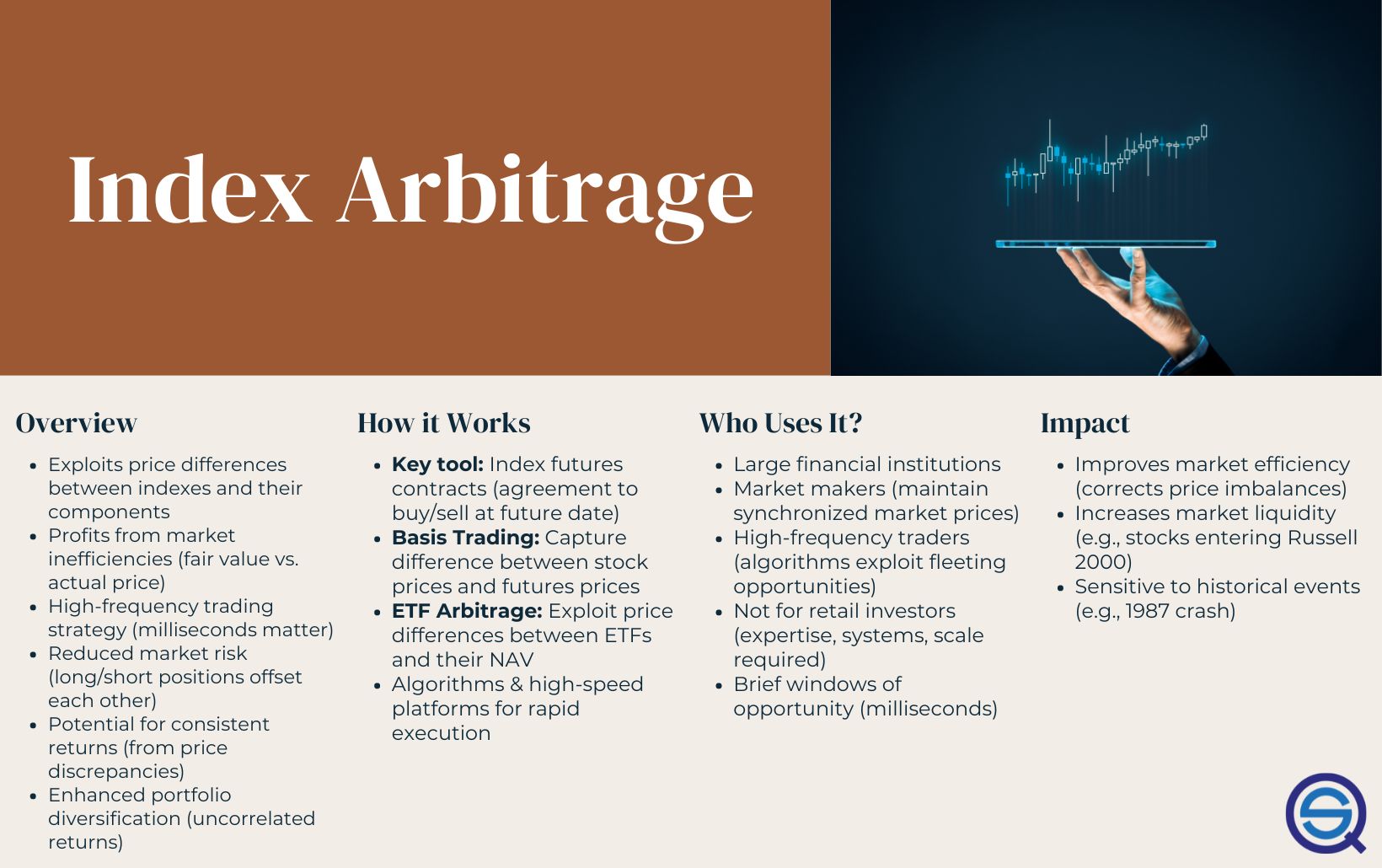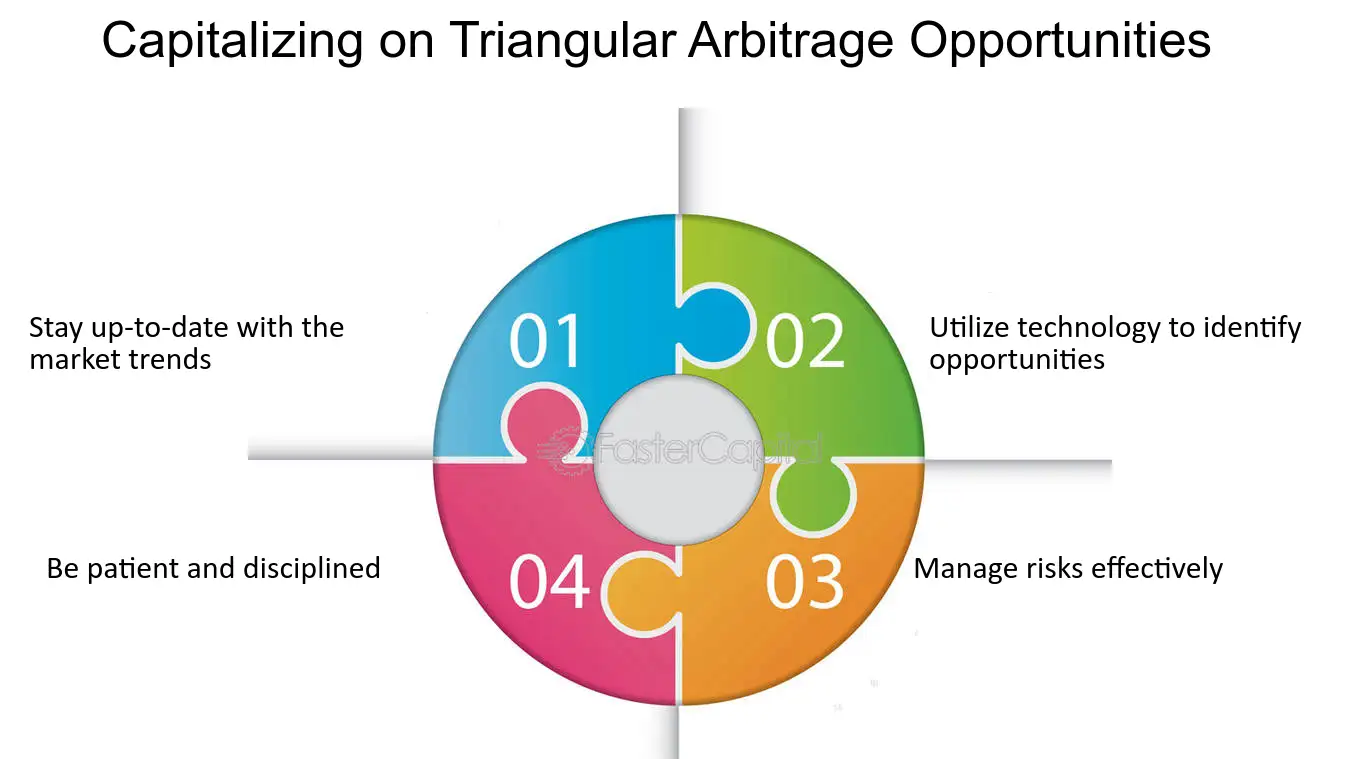Did you know that the term "arbitrage" comes from the French word "arbitrer," meaning "to judge"? Just like a judge balances evidence, day trading arbitrage balances price discrepancies across markets. In this article, we dive into the essentials of day trading arbitrage, covering what it is, how it works, and the key strategies to maximize your profits. We’ll explore the necessary tools, risk mitigation techniques, and the best markets for arbitrage opportunities. Learn about the capital requirements, common pitfalls, and the critical role of speed in executing trades. Additionally, we’ll guide you on developing a solid trading plan, understanding tax implications, and tracking your performance effectively. Stay ahead of the curve with resources to keep you updated on market trends and the psychological factors that can impact your trading decisions. Join DayTradingBusiness as we equip you with the knowledge to navigate the exciting world of day trading arbitrage!
What is Day Trading Arbitrage?
Day trading arbitrage involves buying and selling the same asset in different markets to profit from price discrepancies. For beginners, it means quickly identifying and exploiting these price differences, often within seconds or minutes. It requires a solid understanding of market dynamics, fast execution, and access to real-time data. Successful day traders use strategies like statistical arbitrage or pairs trading to capitalize on small price movements.
How Does Day Trading Arbitrage Work?
Day trading arbitrage involves buying and selling the same asset across different markets to profit from price discrepancies. A trader identifies a lower price in one market and simultaneously sells it at a higher price in another. This requires quick execution and often involves multiple platforms. Successful arbitrage relies on fast data analysis, low transaction costs, and the ability to act swiftly before prices converge. Tools like trading bots can help automate this process. It’s essential to understand market dynamics and ensure the trades are executed efficiently to lock in profits.
What Are the Key Strategies for Day Trading Arbitrage?
The key strategies for day trading arbitrage include:
1. Identify Price Discrepancies: Monitor multiple exchanges for the same asset to spot differences in prices.
2. Use Technology: Employ trading bots or algorithms for real-time analysis and execution to capitalize on fleeting opportunities.
3. Focus on Liquidity: Trade in highly liquid markets to ensure that your orders are executed quickly without significant slippage.
4. Leverage News and Events: Stay updated on market news that can cause rapid price shifts, allowing you to exploit arbitrage opportunities.
5. Risk Management: Set strict stop-loss orders to minimize potential losses and protect your capital.
6. Practice Scalping: Implement a scalping strategy to make quick profits from small price changes.
7. Diversify Across Markets: Trade across different asset classes or geographic markets to enhance arbitrage opportunities.
8. Monitor Fees and Costs: Account for transaction fees and withdrawal costs, as they can erode your profits.
9. Keep Learning: Continuously educate yourself about market trends and trading techniques to refine your strategy.
What Tools Do I Need for Day Trading Arbitrage?
For day trading arbitrage, you need the following tools:
1. Trading Platform: A reliable platform with low latency and fast execution, like Interactive Brokers or TD Ameritrade.
2. Market Data Feeds: Real-time data feeds to monitor price changes across different exchanges, such as Bloomberg or Reuters.
3. Arbitrage Software: Tools like Coinigy for crypto or TradeStation for stocks that can identify price discrepancies.
4. Risk Management Tools: Stop-loss orders and position sizing calculators to manage risk effectively.
5. Charting Software: Advanced charting tools like TradingView to analyze price movements and trends.
6. High-Speed Internet Connection: Essential for executing trades quickly without delays.
7. News Aggregator: A service like Benzinga for real-time news that might affect prices.
These tools will help you spot arbitrage opportunities and execute trades efficiently.
How Can I Minimize Risks in Day Trading Arbitrage?
To minimize risks in day trading arbitrage, follow these steps:
1. Research Thoroughly: Understand the markets and instruments you’re trading. Familiarize yourself with price discrepancies and market inefficiencies.
2. Use Reliable Tools: Utilize advanced software for real-time data tracking and alerts. This helps you identify arbitrage opportunities quickly.
3. Set Strict Limits: Establish clear stop-loss orders to limit potential losses. Define your risk tolerance before executing trades.
4. Diversify Trades: Spread your investments across different assets or markets to reduce exposure to any single trade.
5. Use Leverage Cautiously: While leverage can amplify returns, it also increases risk. Use it wisely and understand the implications.
6. Monitor Market Conditions: Stay informed about market news and events that could impact volatility and price movements.
7. Practice with a Demo Account: Before trading with real money, practice your strategies in a simulated environment to build confidence.
8. Keep Emotions in Check: Stick to your trading plan and avoid impulsive decisions based on fear or greed.
By applying these strategies, you can effectively minimize risks in day trading arbitrage.
What Markets Are Best for Day Trading Arbitrage?
The best markets for day trading arbitrage include forex, cryptocurrencies, and stock markets. Forex offers high liquidity and low spreads, making it ideal for quick trades. Cryptocurrencies can have significant price discrepancies across exchanges, providing ample arbitrage opportunities. Stock markets, especially with ETFs and large-cap stocks, often have price variations due to delays in information dissemination. Focus on markets with high volume and volatility for the best results.
How Much Capital Do I Need to Start Day Trading Arbitrage?

To start day trading arbitrage, you typically need at least $5,000 to $10,000. This amount allows for sufficient capital to cover margin requirements, transaction fees, and potential losses. However, having more capital can provide better flexibility and reduce the risk of being margin-called. Ultimately, your specific trading strategy and the markets you choose will influence the exact amount needed.
What Are Common Mistakes in Day Trading Arbitrage?
Common mistakes in day trading arbitrage include:
1. Ignoring Transaction Costs: Failing to account for fees can erode profits.
2. Overleveraging: Using too much leverage increases risk and can lead to significant losses.
3. Neglecting Market Research: Not staying informed about market conditions can result in poor decisions.
4. Inadequate Risk Management: Not setting stop-loss orders exposes traders to unnecessary risks.
5. Chasing Trends: Entering trades based on short-term trends without analysis can lead to losses.
6. Lack of Strategy: Trading without a clear plan often results in impulsive decisions.
7. Emotional Trading: Letting emotions drive decisions can derail a trading strategy.
8. Failing to Monitor Positions: Not keeping an eye on trades can lead to missed opportunities or losses.
Avoiding these pitfalls can improve your success in day trading arbitrage.
How Do I Find Arbitrage Opportunities in Day Trading?
To find arbitrage opportunities in day trading, start by identifying price discrepancies between different markets or exchanges. Use real-time data and trading platforms that allow for quick execution. Monitor correlated assets, like stocks and ETFs, for price variations. Employ tools like scanners to track these differences instantly. Analyze transaction costs to ensure profitability. Finally, practice with a demo account to refine your strategy before trading with real money.
What Is the Role of Speed in Day Trading Arbitrage?

Speed is crucial in day trading arbitrage because it allows traders to quickly exploit price discrepancies between different markets or assets. The faster you can execute trades, the better your chances of profiting before the price converges. Market conditions can change in seconds, so having a fast execution time and low latency can make the difference between a profitable trade and a loss. Additionally, automated trading systems often rely on speed to capitalize on fleeting opportunities, reinforcing the importance of rapid decision-making and order placement in arbitrage strategies.
How Can I Develop a Day Trading Arbitrage Plan?
To develop a day trading arbitrage plan, follow these steps:
1. Research Markets: Identify assets with price discrepancies across different exchanges. Focus on stocks, forex, or cryptocurrencies.
2. Choose Your Tools: Use trading platforms and tools that provide real-time data and allow for quick executions.
3. Set Criteria: Define your entry and exit points, profit targets, and risk management strategies. Decide on the minimum price difference needed for a trade to be worthwhile.
4. Start Small: Begin with a small capital to test your strategy. Focus on a few assets to avoid overwhelming complexity.
5. Monitor Performance: Keep track of your trades, analyze results, and adjust your strategy based on performance data.
6. Stay Informed: Follow market news and trends that could affect price movements.
7. Practice Discipline: Stick to your plan, avoid emotional trading, and be prepared to cut losses quickly.
By systematically applying these steps, you can develop a solid day trading arbitrage plan.
Learn about How to Develop a Day Trading Arbitrage Plan
What Are the Tax Implications of Day Trading Arbitrage?
Day trading arbitrage can lead to significant tax implications. Profits from day trading are typically classified as short-term capital gains, taxed at your ordinary income tax rate. If you trade frequently, you may also need to report these transactions on Schedule D of your tax return. Additionally, wash sale rules can disallow certain losses if you repurchase the same security within 30 days. Keep detailed records of all trades to ensure accurate reporting and consider consulting a tax professional for personalized advice.
Learn about Tax Implications of Day Trading in Different Countries
How Do I Track My Performance in Day Trading Arbitrage?
To track your performance in day trading arbitrage, follow these steps:
1. Set Clear Goals: Define your targets for profits and risk levels.
2. Use a Trading Journal: Record every trade, including entry and exit points, reasons for the trade, and outcomes.
3. Analyze Metrics: Calculate win rate, average profit per trade, and maximum drawdown to evaluate performance.
4. Review Regularly: Analyze your journal weekly or monthly to identify patterns and areas for improvement.
5. Utilize Software Tools: Consider trading platforms or apps that offer performance analytics tailored for arbitrage strategies.
6. Stay Updated on Market Conditions: Track how external factors impact your trades and adjust your strategy accordingly.
Consistently monitoring these aspects will help you refine your approach and maximize your success in day trading arbitrage.
Learn about How Do Brokers Track and Report Day Trading Activity?
What Are the Best Resources for Learning Day Trading Arbitrage?
The best resources for learning day trading arbitrage include:
1. Books: "Day Trading and Swing Trading the Currency Market" by Kathy Lien offers insights into forex arbitrage strategies.
2. Online Courses: Websites like Udemy and Coursera provide courses specifically on day trading and arbitrage techniques.
3. YouTube Channels: Channels like "Warrior Trading" and "The Trading Channel" offer practical tips and strategies for beginners.
4. Forums and Communities: Join Reddit’s r/Daytrading and Elite Trader forums for discussions and shared experiences.
5. Trading Simulators: Use platforms like Thinkorswim or TradingSim to practice arbitrage strategies without real money.
6. Webinars: Many trading platforms host free webinars on arbitrage; sign up to gain insights from experienced traders.
Engage with these resources to build a solid foundation in day trading arbitrage.
Learn about What Are the Best Resources for Learning Day Trading Bots?
How Can I Stay Updated on Market Trends for Arbitrage?

To stay updated on market trends for arbitrage in day trading, follow these steps:
1. Use Real-Time News Feeds: Subscribe to financial news websites like Bloomberg or Reuters for instant updates.
2. Follow Market Analytics Platforms: Utilize platforms like TradingView or CoinMarketCap for live data and analysis.
3. Join Trading Communities: Engage in online forums or social media groups focused on arbitrage strategies.
4. Set Alerts: Use apps to set price alerts for specific assets to catch arbitrage opportunities as they arise.
5. Analyze Historical Data: Regularly review past market data to identify patterns that may indicate future trends.
6. Monitor Economic Indicators: Keep an eye on economic reports and events that can impact market volatility.
By combining these resources, you can effectively track market trends relevant to day trading arbitrage.
Learn about How to Stay Updated on AI Trends in Day Trading?
What Psychological Factors Should I Consider in Day Trading Arbitrage?
Consider these psychological factors in day trading arbitrage:
1. Emotional Control: Stay calm under pressure. Fear and greed can lead to poor decisions.
2. Discipline: Stick to your trading plan. Avoid impulsive trades based on market fluctuations.
3. Patience: Wait for the right opportunities. Don't force trades; good setups may take time.
4. Risk Tolerance: Understand how much you can afford to lose. Manage risk with stop-loss orders.
5. Confidence: Trust your analysis and strategies. Overconfidence can lead to reckless trading.
6. Adaptability: Be ready to adjust your strategies based on changing market conditions.
Focusing on these factors will enhance your decision-making and improve your chances of success in day trading arbitrage.
Conclusion about Day Trading Arbitrage for Beginners
In conclusion, mastering day trading arbitrage requires a solid understanding of market mechanics, effective strategies, and the right tools. By minimizing risks and being aware of common pitfalls, traders can enhance their chances of success. Continuous learning and adaptation to market trends are vital. For comprehensive insights and guidance, DayTradingBusiness is here to support your trading journey.